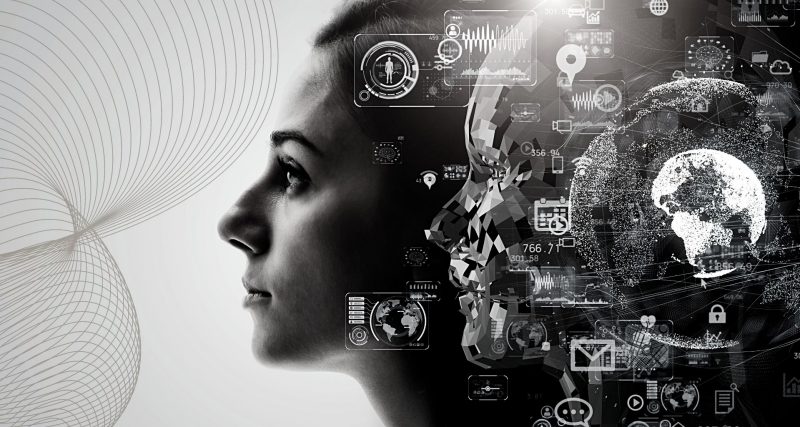OpenAI is an artificial intelligence research organization that develops advanced AI models and systems. OpenAI was founded by a group of technology leaders, including Elon Musk, Sam Altman, Greg Brockman, Ilya Sutskever, and Wojciech Zaremba. The organization is dedicated to advancing artificial intelligence responsibly and beneficially, and its research has produced a wide range of groundbreaking AI technologies, including NLP, computer vision, and reinforcement learning.
What is ChatGPT?
ChatGPT is one of the language models developed by OpenAI. It is a large-scale neural network that has been trained on vast amounts of text data using a technique called unsupervised learning. As a result, it can understand and generate natural language text in various contexts. ChatGPT is designed to be conversational, allowing it to carry on human-like dialogues with users on multiple topics.
A simple word ChatGPT could be described as follows:
ChatGPT is like a really smart robot that can talk with you like a human. It can understand what you’re saying and can answer your questions or even just chat with you about anything you want. It’s like having a really cool friend that knows a lot about everything and is always there to talk to.
ADVERTISEMENT
It’s called ChatGPT because it uses something called “artificial intelligence” to understand what you’re saying and generate responses that sound like they were written by a person. And the “GPT” part stands for “Generative Pre-trained Transformer,” which is just a fancy way of saying that it’s a type of computer program that’s really good at understanding and generating text.
So, if you ever want to chat with a really smart robot friend, you can talk to ChatGPT!
Current Power & Extent of ChatGPT
ChatGPT, as a language model, can understand and generate human-like text in a wide range of contexts, making it useful for various applications. Some of its current capabilities include:
ADVERTISEMENT
- Natural language processing: ChatGPT can understand and generate natural language text, allowing it to carry on human-like conversations with users.
- Multi-lingual support: ChatGPT can understand and generate text in multiple languages, including English, Spanish, French, German, and many more.
- Answering questions: ChatGPT can provide informative and accurate answers to a wide range of questions, from general knowledge questions to more complex technical queries.
- Writing assistance: ChatGPT can provide suggestions and help generate written content, including articles, stories, and other forms of written communication.
- Task-oriented dialogue: ChatGPT can engage in task-oriented dialogues, such as scheduling appointments, ordering food, and making reservations.
- Chatbot integration: ChatGPT can be integrated into chatbots, allowing businesses and organizations to provide efficient and effective customer service through conversational AI.
It’s worth noting that ChatGPT is still an AI system in development, and its capabilities are continually improving through ongoing research and training.
Who are the ideal users of ChatGPT?
A wide range of users for various applications can use ChatGPT. Some ideal users of ChatGPT include:
- Individuals looking for conversational AI: ChatGPT can be used by individuals who want to engage in natural language conversations with an AI system. It can be used to answer questions, provide recommendations, or simply chat.
- Businesses and organizations: ChatGPT can be used by companies and organizations to provide customer service through conversational AI. It can be integrated into chatbots and other customer service tools to assist customers with inquiries, support requests, and different needs.
- Content creators and writers: ChatGPT can be used by content creators and writers to generate ideas, suggestions, and even entire pieces of content. It can provide assistance with grammar, sentence structure, and other writing-related tasks.
- Researchers and developers: ChatGPT can be used by researchers and developers who are working on natural language processing, conversational AI, and related fields. It can be used as a benchmark for testing new models and techniques or as a training tool for developing new AI systems.
- Students and educators: ChatGPT can be used by students and educators for educational purposes. It can be used to answer questions, provide explanations, and even generate study materials.
What threats do chatgpt pose in the technology industry?
Like any powerful technology, ChatGPT does pose certain threats and risks, particularly in terms of its potential impact on society and the technology industry. Here are a few of the most significant threats associated with ChatGPT:
ADVERTISEMENT
- Misinformation and disinformation: ChatGPT can generate realistic-looking text, which can be used to spread false or misleading information. This could be particularly problematic if malicious actors use ChatGPT to create convincing fake news stories, propaganda, or other forms of disinformation.
- Bias and ethical concerns: ChatGPT is trained on large datasets, which means it can reflect biases and prejudices in that data. This could lead to ChatGPT generating biased or prejudiced responses. There are also ethical concerns around the use of AI for specific applications, such as social manipulation or surveillance.
- Job displacement: ChatGPT and other conversational AI technologies could potentially replace human jobs in areas like customer service, data entry, and other regions where conversation and text-based interactions are expected. This could have a significant impact on the workforce.
- Security concerns: ChatGPT could be used by malicious actors to impersonate individuals or organizations, or to generate convincing phishing emails or other forms of social engineering attacks. There is also the potential for ChatGPT to be used in cyber attacks or to create compelling social media posts, which could have serious security implications.
Overall, while ChatGPT has many useful applications, it is important to be aware of the potential risks and challenges associated with its use.
It will be necessary for researchers, developers, and policymakers to work together to address these challenges and ensure that AI is developed and used responsibly and ethically.
Future of ChatGPT
The future of ChatGPT and other language models like it is expected to be one of continued growth and innovation. As AI research and development continue to advance, ChatGPT will likely become even more capable and versatile, with new and improved capabilities.
Some expected future developments for ChatGPT could include the following:
- Improved accuracy and precision: As AI research advances, ChatGPT could become even more accurate and precise in generating human-like text. This could make it even more helpful for a wide range of applications.
- Enhanced multi-lingual support: ChatGPT can already understand and generate text in multiple languages, but future developments could see it becoming even more proficient in this area. This could make it an even more valuable tool for businesses and organizations operating in global markets.
- Personalization and customization: ChatGPT could be further developed to be more personalized and tailored to individual users. This could make it even more effective at providing individualized recommendations and assistance.
- Integration with other AI technologies: ChatGPT could be integrated with different AI technologies, such as computer vision or speech recognition, to provide more seamless and comprehensive AI experiences.
- Advanced applications in research and medicine: ChatGPT and other language models could be used for advanced applications in research and treatment, such as drug discovery, medical diagnosis, and even personalized medicine.
Conclusion
Overall, the expected future of ChatGPT is one of continued growth and innovation, with new and improved capabilities that could have significant implications for a wide range of industries and fields.








